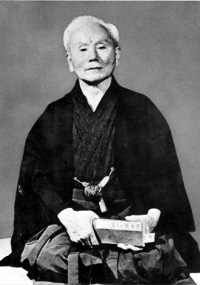History

Modern karate began hundreds, or perhaps thousands of years ago in Asia. A likely source of the arts which evolved into Karate and other forms of unarmed self-defense is the Kshatriya warrior caste of India. Bodhidharma, or Daruma, is widely thought to have been a member of this caste who transmitted Kshatriya skills and practice to Chinese monks at the Shaolin monastery.
From China, a lively trade with Okinawa and Japan included exchanges of “martial arts,” (really civilian self defense skill) along with trade goods. These skills were of great importance in Okinawa, where weapons were outlawed for centuries. With the end of the feudal era, Okinawan karate masters saw a need to re-formulate karate practice and teaching if it were to survive into the 20th century and beyond. Representatives of the martial arts were thus sent to Japan to expand karate practice outside the island archipelago. For this task they sent men who were highly literate, skilled teachers possessing the necessary tact and diplomacy needed to present their beloved art to the Japanese public.
In those days this audience was not receptive to foreign concepts and practices, and the transplanted masters had to find ways to market karate to a nationalistic and patriotic Japanese populace. They did it by “re-branding” karate with Japanese names for techniques and Kata (“Formal Exercise”), and by changing the name of the art itself from “China Hand” to “Empty Hand.” Existing precepts of budo were inherently acceptable in Japan, so aside from outward names, nothing really changed from how karate had been taught in Okinawan public schools in the early 1900s.

Funakoshi Gichin, a schoolteacher, was one of the first instructors to settle in Japan – just 100 years ago in 1922! He is credited for many of the changes made to karate practice, including some adoptions from other Japanese arts practiced by his new friends and mentors. One of these was the belt ranking system and the familiar white uniform, or “gi.” Finally, with sparring becoming more and more popular, tournaments were eventually permitted in 1957 as a way of introducing karate to the public and increasing membership. Mr. Funakoshi had reservations about tournaments changing karate from a budo into a sport, so traditional karate organizations are still very careful to include these special trainings in a limited way, as a means of improving karate rather than an end in and of themselves. Tournaments allow one to practice in a stressful situation, which while not a perfect proxy for a real need to act in self-defense is as close as one can get without going looking for trouble.
In the 100 years since Funakoshi Gichin and other masters took their art to Japan, karate has spread to the world at large. Inevitably, the art has been adapted to fit into new cultures while technical improvements have been made through the scientific study of kinesiology. The old masters might not recognize the format of a contemporary karate practice, but they would recognize the movements and stances of their art.
